

General Info
Colors and Variants
▼
⠀⠀↳ ERS-110
⠀⠀↳ ERS-111
Software▼
⠀⠀↳ AIBO-ware
Accessories
Common Issues▼
⠀⠀↳ Leg Gear Failure
⠀⠀↳ Ears Falling Apart
⠀⠀↳ Battery Failure
So why get an ERS-110 or 111?
Manuals & Helpful Links
Sources
The first ever model of AIBO is the ERS-110. It has cute floppy ears and a flexible tail it can wag around. This one's known for selling out within minutes upon launch, showing the world how popular the idea of a robotic friend is. This model set the stage for future robotic friends and paved the way for several AIBO models down the line.

This AIBO can detect petting on its head and the pressing of its pawpads. The lights beneath its visor give it the ability to communicate to the owner how it is feeling. Unlike later models, this AIBO doesn't use voice commands and instead can be controlled with a special remote.
The main software for this model is simply called AIBO-ware. AIBO grows up from a puppy to an adult with its own personality! My two ERS-111s are certainly very different...Leon likes to relax and lay back while Lola wants to race from one end of the room to the other.
Unique to this model of AIBO is a small reset button located to the right of the power button on the chest. You can use anything thin enough to poke into the hole and do a reset on the AIBO. This button can be very helpful when encountering issues with your AIBO such as refusal to boot properly or other issues. It may not always fix a given issue, but it should be one of the first things you try when attempting to fix a problem.
Of course, we can't discuss the ERS-110 without mentioning its designer, Hajime Sorayama, who is mainly known for his pictures of metallic ladies. How about a robot dog to go with your robot woman?
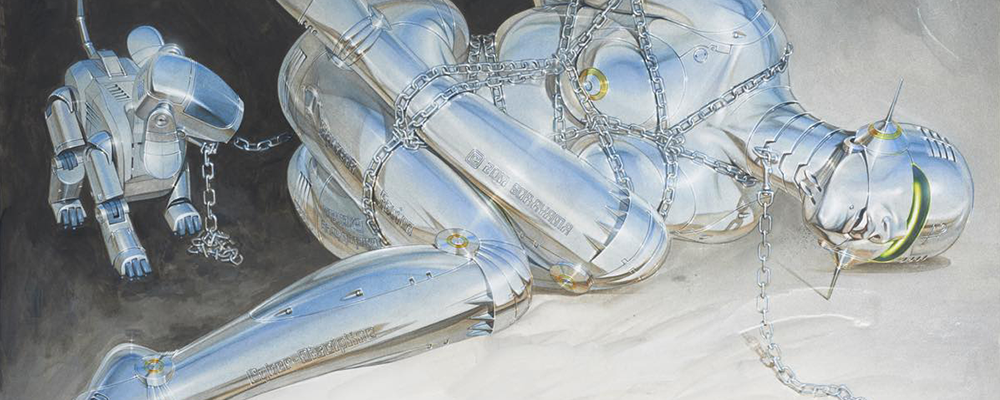 |
| Pictured: The AIBO ERS-110 with a similarly shiny woman. |
This is possibly the cheapest model of AIBO, priced at around $50 on average.
There are two AIBO models in the first generation: the original ERS-110 and a re-release called the ERS-111. The difference between these are minimal and mostly come down to color.
This series of AIBO has the least variety. The original ERS-110 comes in a single color, a goldish-silver color, while the ERS-111 comes in either silver or black.
Here are all official colors:
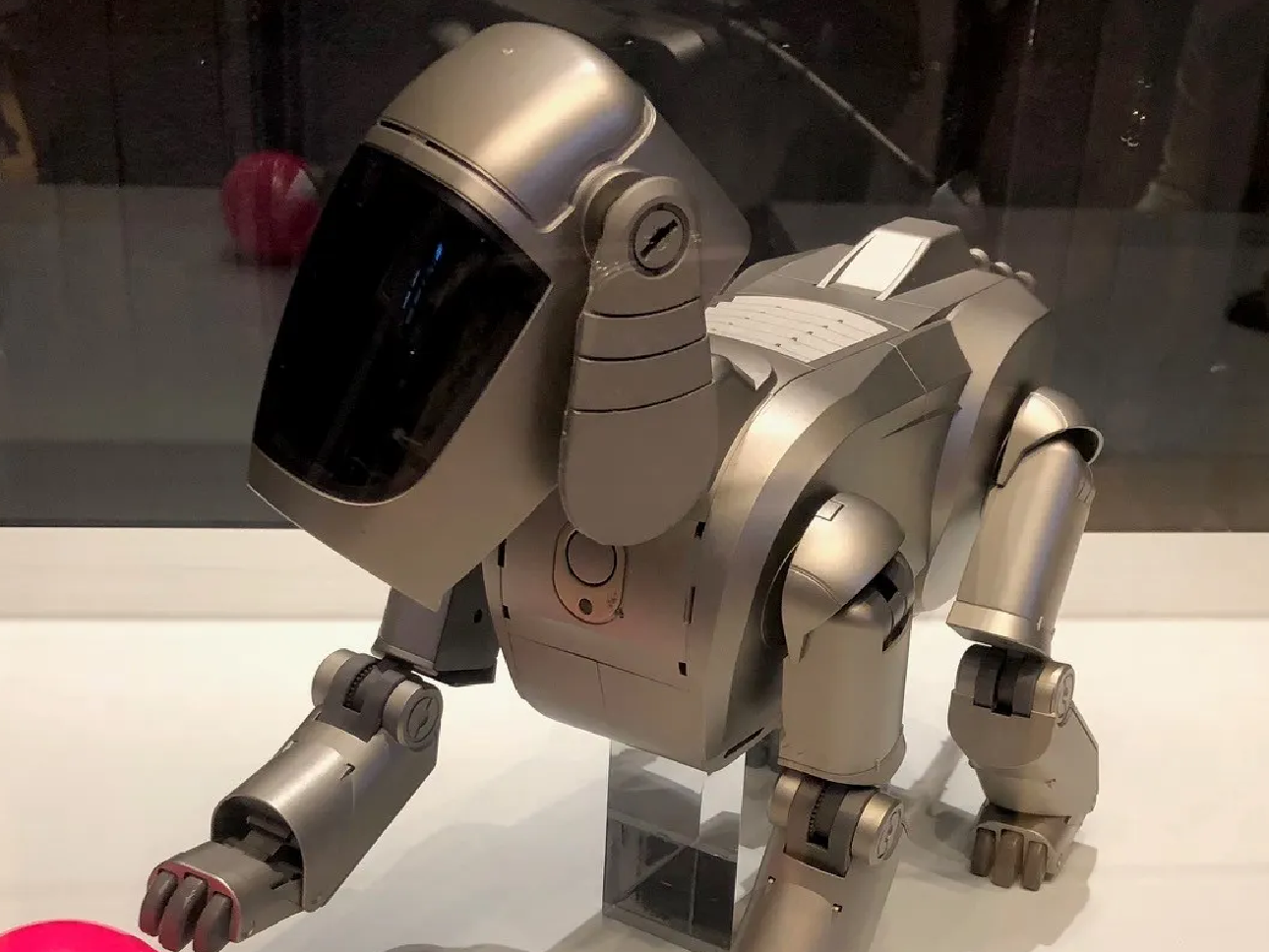 |
| Gold-Silver (110) |
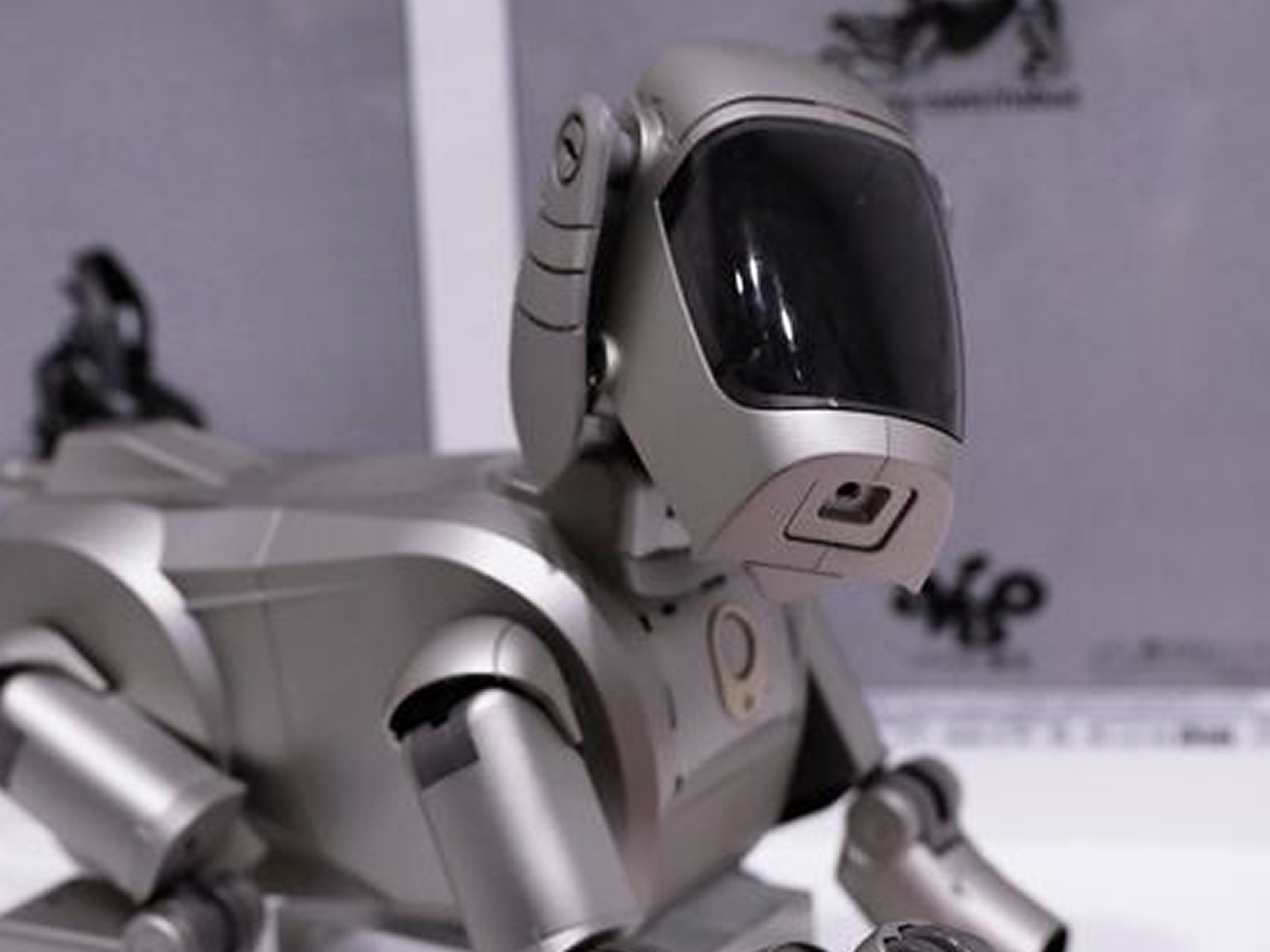 |
 |
| Silver photo credit: Philadelphia Inquirer |
Black photo credit: Y! Auctions |
The original ERS-110 and silver ERS-111 may look very similar, but the ERS-110 has a gold tint to it while the ERS-111 is gray.
The following software is compatible with the ERS-110 & 111:
| Sony Official |
|---|
| AIBO-ware Hello! Aibo Party Mascot Speedboarder |
AIBO-ware is software where AIBO grows from a baby to an adult. AIBO can understand tonal commands from the sound commander, respond to petting, and play with its pink ball. No two AIBOs will be exactly the same as the way you raise them influences their personality.
The first generation of AIBO is compatible with several accessories. These include:
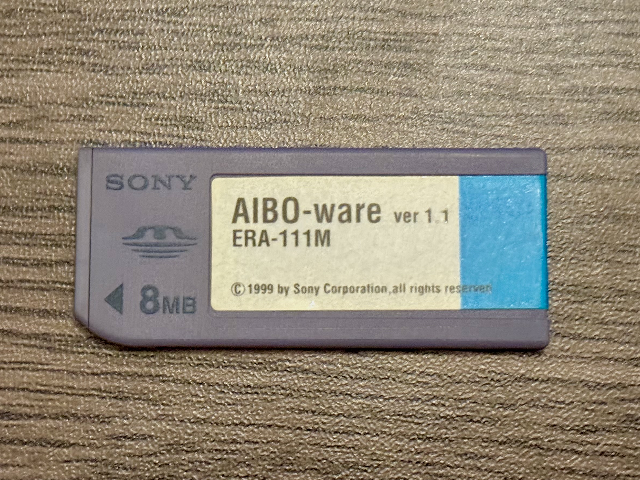 |
| Pictured: An AIBO memory stick. |
AIBO usually runs on a memory stick. These sticks contain "AIBOware" (AIBO software) that allow AIBO to do different things.
 |
| Pictured: Pink ball with the word "aibo" on it. |
Most AIBOs come with a pink ball. They like to look at it and play with it.
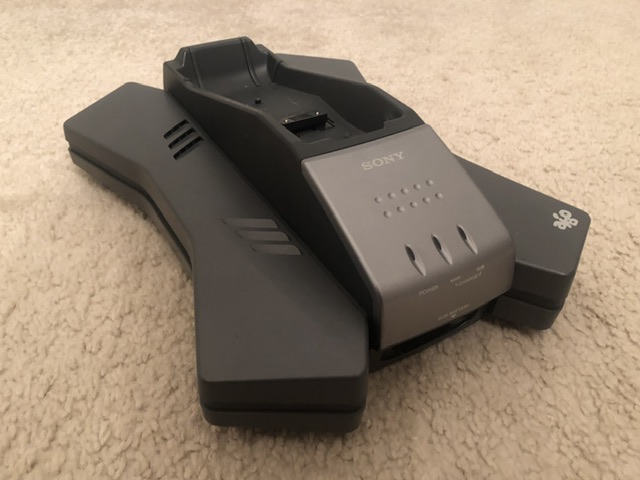 |
| Pictured: An energy station. |
The energy station (AKA the charging station or docking station) is for charging your AIBO ERS-110. There are light indicators at the front of the station to indicate charge level and whether the station is plugged in properly.
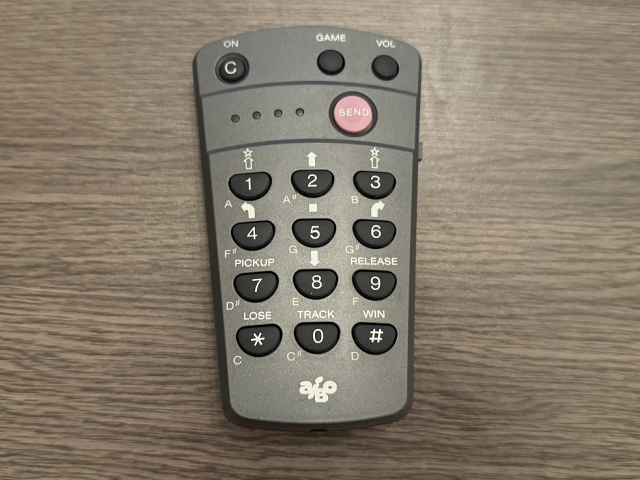 |
| Pictured: The remote. |
ERS-110s & 111s take commands via a specific remote. From the remote, you can switch AIBO between modes and praise/scold them. In Performance Mode, you can use the remote to have AIBO do all sorts of cute and cool skits.
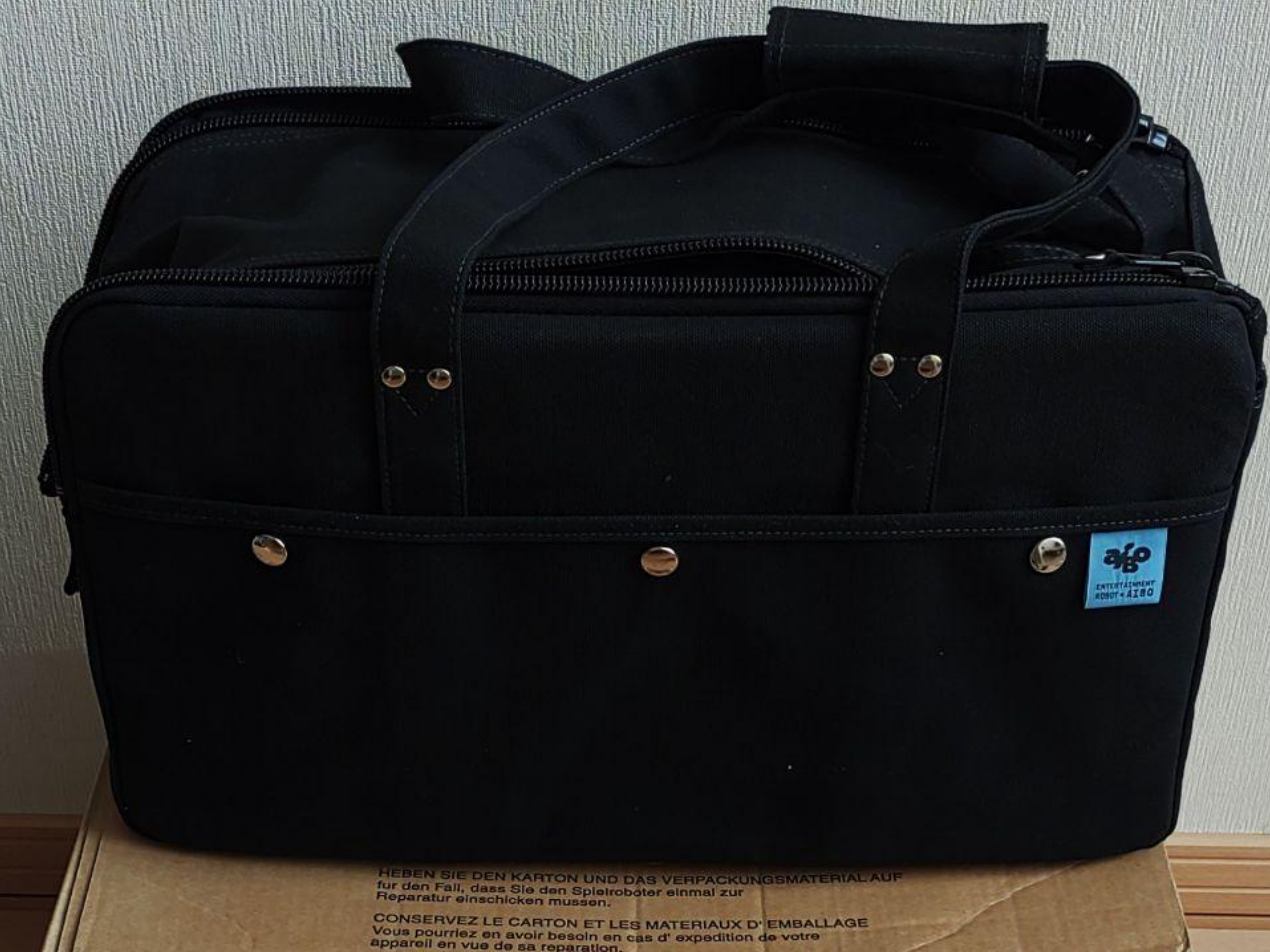 |
| Pictured: A black ERS-111 carrying bag. |
There are official carrying bags for the ERS-110 and 111. Make sure to remove AIBO's battery if you are going to carry it inside the bag.
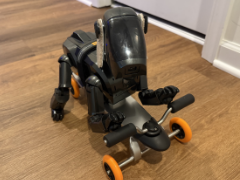 |
| Pictured: Lola the ERS-111 on the Speedboard. |
AIBO uses the speedboard while running the Speedboarder software. It can go backwards, forwards, left, and right.
This is not an entire list of all ERS-110 accessories. For a more complete list of AIBO accessories, visit the accessories page.
The ERS-110 is pretty hardy but they still tend to have a few problems. Some can be solved with a press of the reset button; others may need more advanced work to be performed on them.
The following information is for educational purposes and it is not adequate information to try and repair AIBO. You should not attempt complicated repairs on any AIBO unless you are confident you know what you are doing. When disassembling AIBO, it can be easy to make things worse, such as by accidentally tearing the fragile flexible "flexi" ribbon cables. If your AIBO needs repairs, it is best to pay someone experienced to do it.
The ERS-110 has several gears inside its legs. These gears have tiny teeth that shred over time. One sign of leg problems is plastic coming out from the AIBO; this is the shredded material falling outside the leg. Eventually, AIBO's legs will go limp and they won't be able to walk or play.
Problems can also manifest as the leg(s) locking up instead of going limp. This can be caused by debris, such as bits of shredded gears, getting between other gears.
These problems can be fixed by replacing the faulty shredded gears with resin-printed ones.
The backing of the ears is unfortunately made out of a rubber material that has disintegrated during the past several decades. Many ERS-110s don't have ears for this reason.
To make your own ears, you can use any material that is flexible and won't obstruct AIBO's movement, such as fabric.
When AIBO won't turn on or can only run for a few minutes, the most common reason is that their batteries are in need of "recelling", a process of replacing the old dead battery cells with fresh, new ones. All original, unmodified AIBO ERS-110 batteries are dead or near dead.
Store the battery in a cold, dark place until you can have it recelled. It is safe to recell it even if the cells are venting. If venting, do not insert the battery into any kind of charger until it is repaired properly.[1]
Recelling batteries is a complicated procedure which has a full guide located here. Some community members offer a battery recelling service for a fee of $50-$100 USD. Do not attempt to recell batteries if you are not familiar with Lithium-Ion batteries and/or do not have any background in electronics or technology.
They're very strange and cool. They can sound like an alien, meow like a cat, or blast a siren like they're the police. They are far from constrained to their doggish physique - which is probably why Sony didn't really call AIBOs "dogs" until later in AIBO's life.

Owning one of these models is like owning an important piece of robotic pet history. The impact the ERS-110 had on companion robots as a whole is undeniable.
Perhaps most importantly: minus the leg gear issues, the ERS-110 and 111s don't typically develop major problems in the same way some other AIBO models do. You'd have a shiny, sturdy friend to tag along with you for a very long time. A simple gear replacement and they're usually good to go!
Here are some helpful manuals for the first generation of AIBO.
 ERS-110 Operating Instructions (English)
ERS-110 Operating Instructions (English)
General operation instructions for the ERS-110, including how to turn it on and play with it.
 Serial Number Checker
Serial Number Checker
You can use this tool to check your AIBO's serial number. While a rare occurence, if there's a mismatch between your AIBO's body color and the color that the serial number comes up as, that means at some point your AIBO's parts were switched around. It isn't very important, but it's a little cool!
 aibohack.com's Aibo 11x Browser
aibohack.com's Aibo 11x Browser
You can download Aibo Browser from here, a piece of fan-made PC software that allows you to easily view the data on your AIBO's memory stick. Remember to always use a Sony-brand stick reader to protect your stick.
 VirtualPaws' Page on ERS-110/111
VirtualPaws' Page on ERS-110/111
Another informative page about the ERS-110 & 111 models of AIBO.
 ERS-111 Adoption Certificate
ERS-111 Adoption Certificate
You can print this certificate as a proud symbol that you own an ERS-111. Right-click the image and hit "Save As" so you may use it.
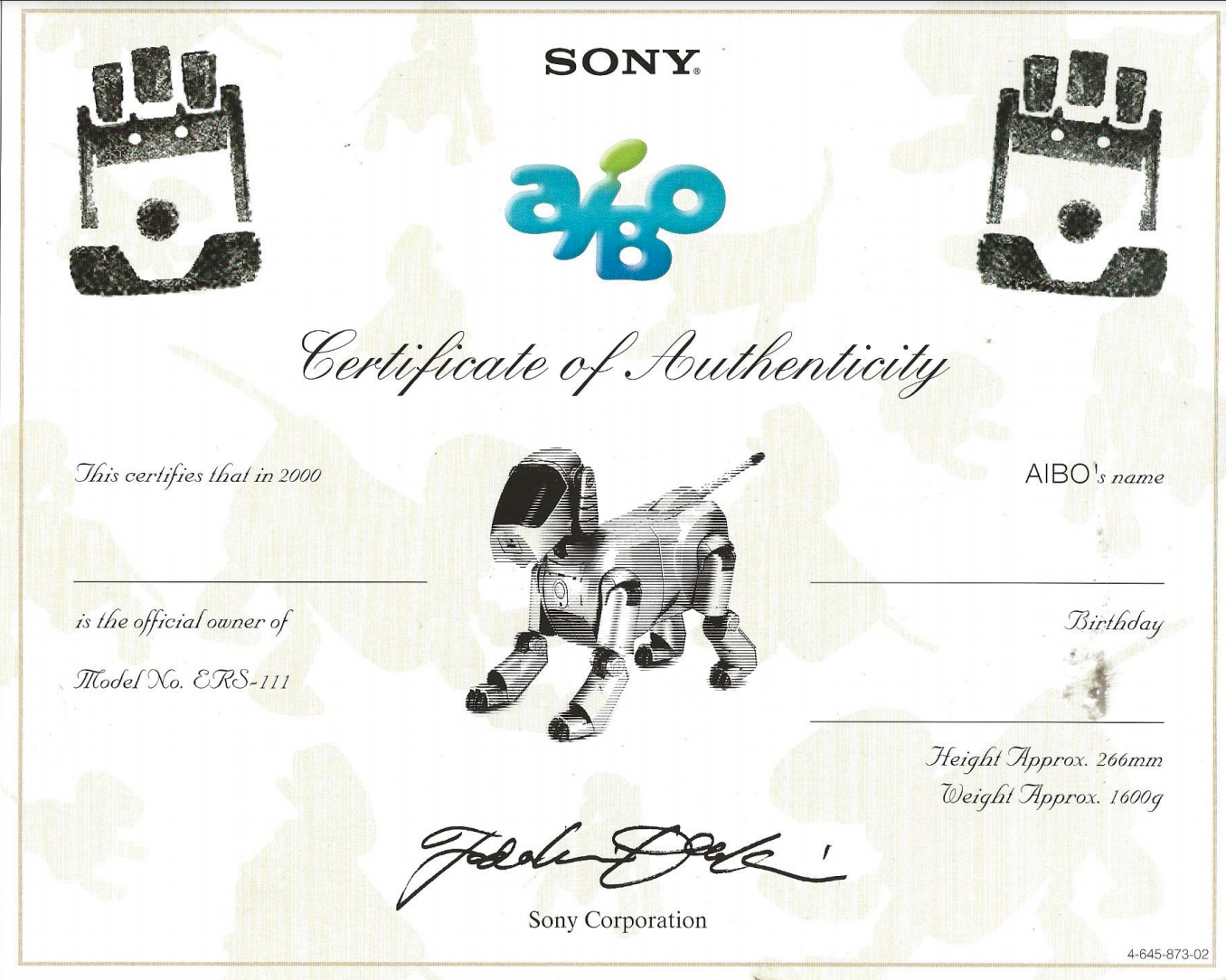
Most information on this page is unsourced due to part of it coming from personal experience or sources buried in venues that are not completely public and would be impractical to cite. Instead, I have decided to provide citations specifically in cases where a piece of information could pose a safety issue to AIBO or its human friends.
[1] Information on how to handle batteries which have venting cell(s) was provided by Michael Larkin.
Some AIBO images have been taken from other websites. They are used here for educational purposes.
